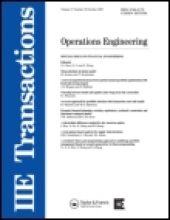Networks can also be a useful way of modeling the spread of a wildfire. A landscape can be divided into cells and the midpoints of the cells form the nodes of the network. Arcs connect nodes to their neighbors and the weight on an arc represents the time a fire takes to travel between nodes, based on landscape and weather characteristics. Thus, we have applied network interdiction to the problem of allocating resources to a landscape prior to a fire in order to prevent fire outbreak.
A former Ph.D. student of mine has developed an integer programming model for computing the worst-case vulnerability of a fire. He also examined how to mitigate against pyro-attacks and how to model pyro-terror vulnerability with an explicit initial response phase model. This work was funded by the Department of Homeland Security.
I am also working on a paper on using mixed-integer programming to design incentive structures to encourage private landowners to take fuels reduction actions on their lands to prevent the spread of fires. This work is funded by the Joint Fire Science Program. In the future I will continue to seek funding from the Joint Fire Science Program on a yearly basis for topics centering on the idea of using network interdiction to manage wildfires.
Another former Ph.D. student of mine has developed an approach for optimally locating satellite ground stations to maximize the data collected in the aftermath of a wildfire. He has also studied how to optimize satellite orbits in order to detect wildfires and gather data. In the future I plan to seek funding from the National Science Foundation for this work.
Selected Publications
-
An attacker-defender model for analyzing the vulnerability of initial attack in wildfire suppression
Rashidi, E., Medal, H., and Hoskins, A.. Naval Research Logistics 65(2), 120–134.
Publication Year: 2018
Abstract -
Mitigating a pyro-terror attack using fuel management
Eghbal Rashidi, Hugh Medal. To appear in IISE Transactions.
Publication Year: 2018
Abstract -
A maximal covering location-based model for analyzing the vulnerability of landscapes to wildfires: Assessing the worst-case scenario
Eghbal Rashidi, Hugh Medal, Jason Gordon, Robert Grala, Morgan Varner. European Journal of Operational Research, Volume 258, Issue 3, Pages 1095–1105
Publication Year: 2017
[PDF] [Link to Article] Abstract -
Mitigating a pyro-terror attack using fuel management
Rashidi, E. and Medal, H.. submitted to IIE Transactions
Publication Year: 2016




Benefits and costs of implementing fuel treatments on nonindustrial private forest (NIPF) lands in Mississippi
/0 Comments/in Funding - Wildfire Mitigation and Response /by Academic Web PagesBenefits and costs of implementing fuel treatments on nonindustrial private forest (NIPF) lands in Mississippi
Agency: Joint Fire Science Program (Department of the Interior, Bureau of Land Management)
Researchers: Grala, R.K, Varner, J.M., Medal, H.R. (Co-PI), Munn, I.A., Grado, S.C., Cooke III, W.H.
Amount: $218,000 ($46,513 Medal share)
Pyro-terrorism risk assessment and management: a pilot study
/0 Comments/in Funding - Wildfire Mitigation and Response /by Academic Web PagesAgency:Department of Homeland Security via the National Center for Risk and Economic Analysis of Terrorism Events (CREATE)
Researchers: Medal, H.R. (PI), Gordon, J., Grala, R.K.
Amount: $24,991 ($24,991 Medal share)
Website: CREATE project
A gap analysis of wildland fire response resources in the United States
/0 Comments/in Funding - Wildfire Mitigation and Response /by Academic Web PagesAgency: Department of Homeland Security via the National Center for Risk and Economic Analysis of Terrorism Events (CREATE)
Researchers: Medal, H.R. (PI), Gordon, J., Grala, R.K.
Amount: $49,967 ($45,311 Medal share)
Website: CREATE project
Abstract: